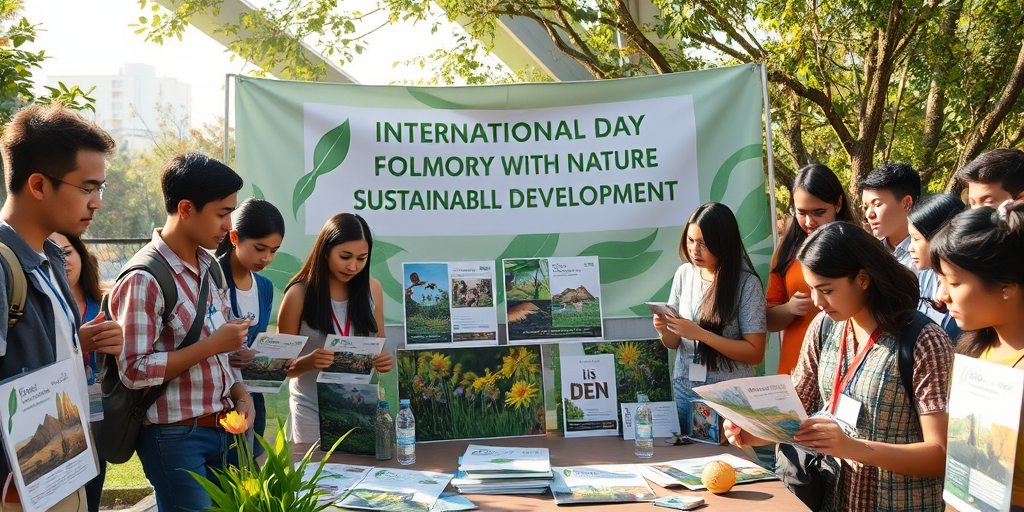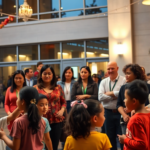**International Day for Biological Diversity 2025: Bonding with Nature**
The International Day for Biological Diversity, observed on May 22, 2025, calls upon humanity to rethink its relationship with the natural world under the theme “Harmony with Nature and Sustainable Development.” This annual observance highlights the critical importance of biodiversity in sustaining life and emphasizes the need for an equilibrium between human development and ecological preservation.
**Understanding Biodiversity and Its Significance**
Biodiversity encompasses the vast diversity of life on the planet, including animals, plants, microorganisms, and entire ecosystems. Each component, from the tiniest microorganism to the largest forest, plays a vital role in maintaining the balance of Earth’s ecosystems. Forests help purify the air, wetlands filter water, and bees pollinate crops, illustrating the interconnectedness of life systems that support human existence.
However, human activities have brought biodiversity under severe threat. According to data, 75% of land-based environments and two-thirds of marine ecosystems have been altered, with approximately one million species at the brink of extinction. This loss is not merely an environmental concern—it’s a human survival issue, influencing food security, climate systems, and increasing the risks of zoonotic diseases like COVID-19.
**The Kunming-Montreal Global Biodiversity Framework**
In 2022, international leaders established the Kunming-Montreal Global Biodiversity Framework, a landmark agreement with aims to restore 20% of degraded ecosystems and halve the spread of invasive species by 2030. This framework links biodiversity conservation to the global Sustainable Development Goals (SDGs), recognizing that healthy ecosystems are crucial for poverty reduction, access to clean water, and climate change mitigation.
**Urgency and Local Impact**
With less than five years to meet the critical 2030 targets, the urgency for immediate action resonates worldwide, including in the United States. Communities in states like California, which face dual challenges of environmental conservation and economic development, understand how closely linked these efforts are to local well-being and prosperity.
Dr. Emily Rodriguez, a conservation biologist in California, observes that “Our local ecosystems are among the most biodiverse in the country, yet they’re incredibly vulnerable. The framework’s targets provide a structured path forward for communities to foster resilience.”
**Implications for Local Communities**
Communities across the U.S. are starting to recognize the tangible benefits of biodiversity through urban greening initiatives, educational programs, and community workshops focused on ecological preservation. In cities like Austin, Texas, local government and environmental groups have collaborated to implement urban forestation projects and awareness campaigns highlighting indigenous wisdom and traditional ecological knowledge.
David Nguyen, an Austin resident and urban planner, notes, “Raising awareness and embedding the principles of biodiversity into city planning is crucial. Our community has seen direct improvements in mental well-being and air quality as we’ve increased green spaces.”
**Future Prospects and Challenges**
If the 2030 targets are not met, the consequences could be irreversible. Thus, education, innovation, and global collaboration in conservation efforts are not optional but necessary solutions going forward. Grassroots movements and technological advancements must unite to create sustainable models for biodiversity conservation that balance ecological and economic needs.
**Raising Awareness and Celebrating Biodiversity**
International Day for Biological Diversity provides a platform for learning and action. The United Nations offers free online courses through its Learning for Nature platform, equipping individuals with tools for green entrepreneurship and conservation advocacy. Local organizations use this day as an opportunity to engage communities with clean-up events, educational workshops, and biodiversity storytelling sessions.
**Conclusion: Protecting What Protects Us**
As the global community confronts the intertwined challenges of biodiversity loss and sustainable development, the International Day for Biological Diversity emphasizes a crucial message: Earth doesn’t need saving from us—it needs saving with us. Every action taken to preserve biodiversity is a step towards securing a future where people live in harmony with nature, safeguarding the planet’s health and, consequently, our own.
For those interested in learning more or participating in local initiatives, information is available through environmental organizations and municipal resources dedicated to promoting biodiversity and sustainable development.
By focusing on education, community involvement, and strategic policy-making, this observance acts as a catalyst for driving positive change towards a more sustainable and harmonious world.







